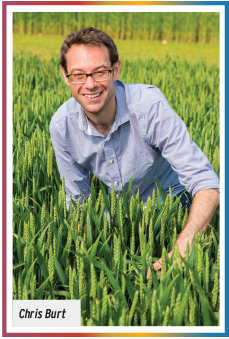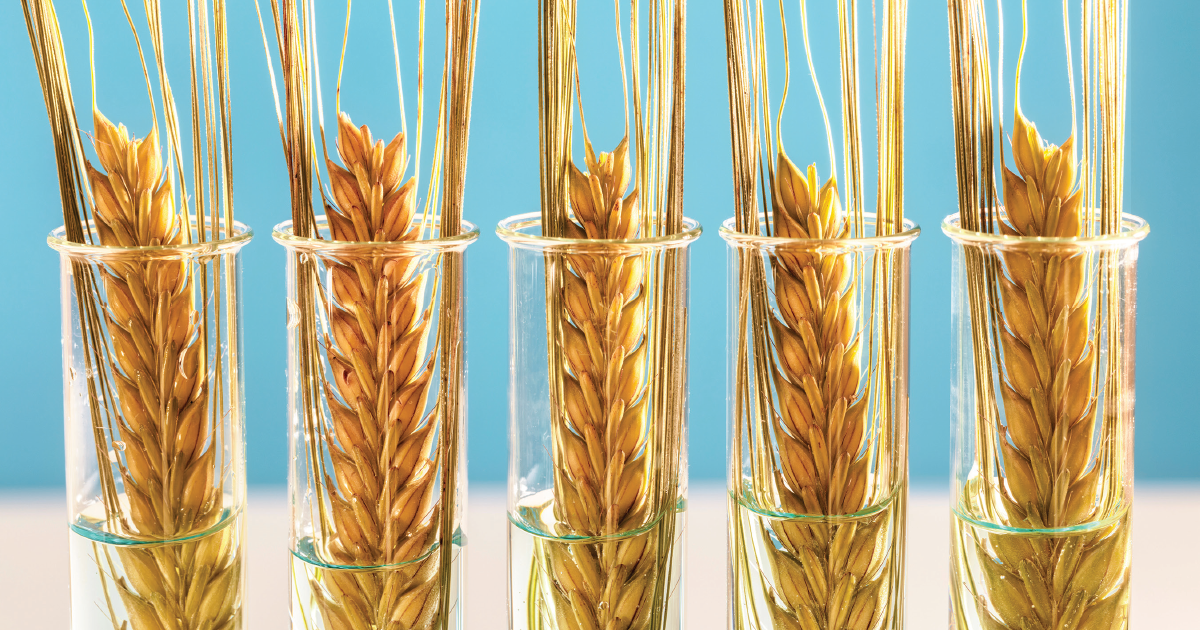By L. Joshua Sosland
June 29, 2021
The New Dawn
of Hybrid Wheat
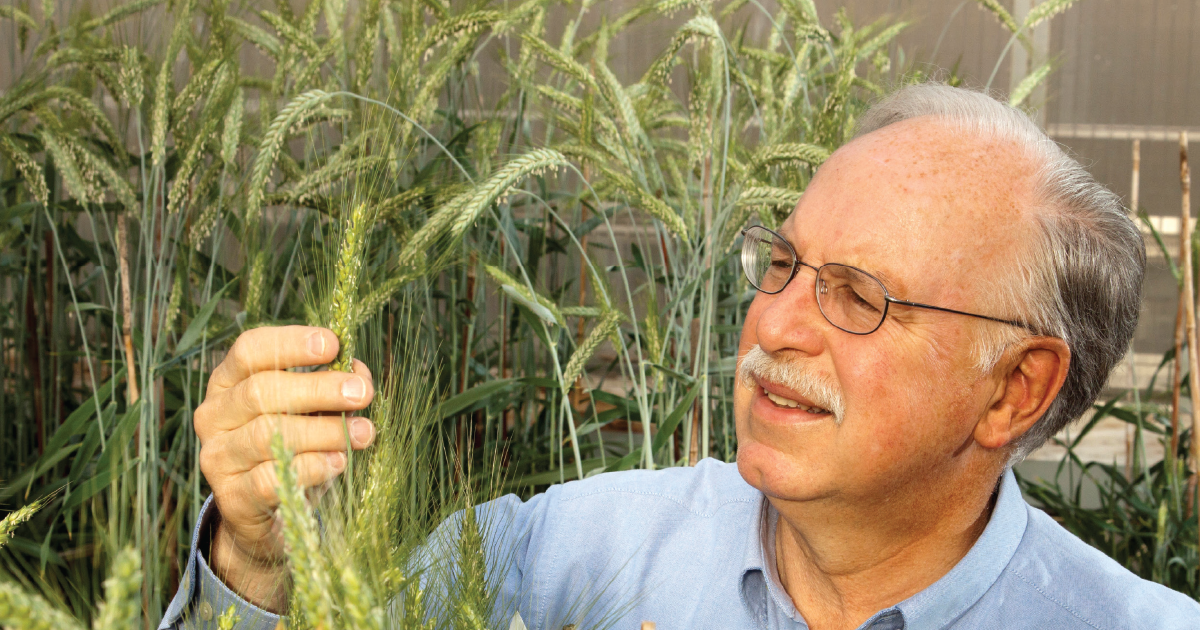

It was just over a 100 years that the sun slowly began rising on a new technology that was destined to transform US agriculture. While it would take a few decades for crop hybridization to take hold, the innovation ultimately would transform crop plantings and play a pivotal role in the ascendance of corn as “king” of US agriculture.
For the last 40 years, this transformation has relegated wheat further and further from its former central position in the farm economy. Thanks to the introduction of hybrid varieties, corn yields in the United States have risen steadily faster than wheat, helping corn encroach on land considered the heart of wheat country. Kansas, long described as the breadbasket of the United States, has harvested more corn than wheat, generally much more, nearly every year since 2003. Over the last three years, Kansas corn production has averaged 736 million bus, versus wheat production at 302 million. In 1950, by comparison, Kansas produced 178 million bus of wheat and 52 million bus of corn.
Now, wheat breeders see a new potential revolution on the horizon. Thanks to a humanitarian imperative, the need to feed a rapidly growing global population; a technological breakthrough — the sequencing of the wheat genome; and more cost-effective economic prospects, the potential for transformative wheat hybrid programs appears more promising than ever.
Plantings of hybrid wheat in the United States and much of the world are negligible currently, but change is looming on the horizon. In May, Syngenta AG announced plans to introduce four hybrid wheats in Europe under the X-Terra brand. A month later, BASF said its hybrid wheat would be sold under the Ideltis brand and would be available by mid-decade in Europe and the United States. Initial work has been focused on Germany, but the company in 2019 hosted the Technical Committee of the North American Millers’ Association, highlighting activities around the company’s hybrid wheat program and providing a tour of their North Carolina facilities.
Jan Gielen, a scientific officer with Zurich, Switzerland-based Syngenta Group, said the potential for hybrid wheat is considerable.
“Improving yields and crop safety by means of hybridization represent a huge challenge but has become within reach due to recent advances in breeding technologies, including the access to genomic tools and resources,” he said.
The company hopes the wheat will be shown to have strong baking qualities, suitable for the French baguette, he added.
“We submitted hybrids this year and need to wait for authorization — two years of official trialing to qualify for the recommended list for France,” Mr. Gielen, who is based in Toulouse, said.
Higher yield is a crucial benefit necessary for hybrid seeds to become successful in the marketplace, but the measure oversimplifies grower considerations,
Mr. Gielen said. With more extreme weather conditions emerging because of climate change, the benefits of hybrids will become more apparent.
“Yield is one thing,” he said. “Hybrids also are more robust. In harsh conditions, hybrids on average perform better than conventional varieties. With a smaller portfolio, you will be able to cover more environments.”
Mr. Gielen said Syngenta has been working to develop hybrid wheat seed since 2010, based on the expectation hybrids would yield more, would be more robust and more resilient to both environmental stresses and diseases. While the initial introduction is slated for Europe, Mr. Gielen said the US market would be ideal, longer term.
“In the United States, yields in general are not as high as in Europe,” he said. “In suboptimal growing areas I think hybrids will really differentiate from conventional. At the same time, you need growers who are comfortable with high tech. In Europe, growers are more receptive to applying fungicides and fertilizers to reach maximum yields.”
While first introduced in the 1910s, hybrid technology for corn did not gain momentum until the 1940s. The cumulative impact over the last eight decades has been extraordinary. Corn yields forecast by the US Department of Agriculture for the 2021 crop were 180 bus per acre, up 475% from 1940 yields of 76. Over this same period, wheat yields increased by 231%. More recently, since 1980, corn yields are up 97%, versus 51% for wheat. Over the last 40 years, corn acreage has increased 8% while wheat acreage has dropped 43%.
Why weren’t wheat hybrids developed and introduced alongside corn hybrids in the 1940s? Stephen Baenziger, PhD, professor emeritus of Agronomy at University of Nebraska — Lincoln, identified two principal reasons.
The first is that wheat already was benefiting from successful breeding programs in the 1930s and 1940s, and the need to increase yields through hybridization was not seen as compelling. By contrast, for the 30 years before 1940, corn yields were barely moving, Dr. Baenziger said.
Indeed, from the mid-1860s until a peak in 1915, wheat yields jumped 52%. Peak corn yields, reached in 1906, were up about 30%.
“Productivity in corn was basically flat, as opposed to wheat, which had continuous improvements because we had a very good dedicated breeding sector working on that,” he said.
Private companies tried introducing wheat hybrids from time to time over the past century, but because cross-bred wheat varieties were seeing modest yield increases, the hybrids that were introduced failed to adequately separate themselves from conventional cultivars, Dr. Baenziger said.
“The public program and private programs continued to improve their competitors, the cultivars,” he said. “And the hybrids never really could distance themselves from what was coming from behind.”
Dr. Baenziger cited a second key reason corn hybridization programs were more successful than wheat.
“Hybrids were relatively easy to make in corn,” he said. “It’s much more difficult in wheat.”
Produced by crossing two inbred lines, hybrid grain requires the sterilization of the male components of one of the two parents, to prevent the plant from self fertilizing. In the case of corn, sterilization is relatively easy. Once it appears in the field the tassel (male) is removed from the plant, and the ear (female) is fertilized by another plant. Multiple rows of detasseled female plants grow beside single or double rows of male plants, the pollen from which fertilize the female plants, which then generate the hybrid seed.
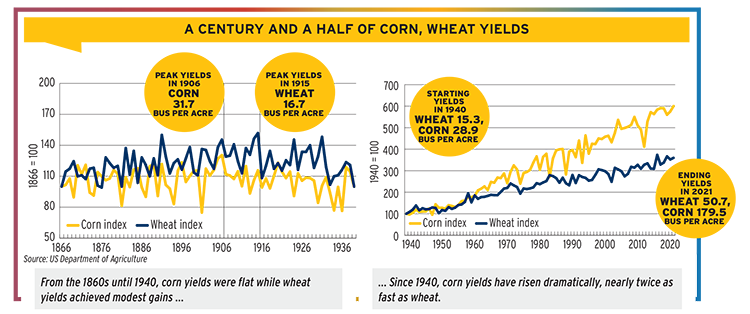
In the case of wheat, the male parts (stamen) are impossible to effectively and economically remove physically from the female plants.
There are other challenges, Dr. Baenziger said. Application of chemical hybridization agencies (CHA) has been used to sterilize the male parts of wheat plants, but this technique has a narrow window of application for pollination success. Corn produces more pollen than wheat, and wheat pollen does not survive as long.
Dr. Baenziger said many breeders and companies look at corn as the model system and are daunted. Attempts by several companies in the 1980s to develop hybrid wheat failed, in part because of a lack of cooperation with public breeding programs.
“Don’t forget it started 100 years ago,” he said. “A better example is hybrid canola, or hybrid rice. Much newer. In rice, for 30 years they worked and didn’t figure out a production system that was worthwhile. Finally, they figured out how to produce hybrids on a large scale. Hybrid wheat will take a sustained investment.”
He cited data showing that, in the most recent survey of the breeding sector, 900 breeders were working on corn, 870 private and 30 public.
“You have massive amounts of investment,” he said. “For wheat, the number was 120 breeders, half each public and private. If you have seven times the number of breeders, you would expect they would have higher productivity.”
Mr. Gielen said the use of chemical hybridization agents has helped breeders like Dr. Baenziger demonstrate the potential for hybrid wheat but cautioned that commercial success will rely on non-chemical solutions.
“The practice of hybridization by means CHA is not sustainable,” he said. “The CHA compounds are subject to strict regulations that limit the acreage on which they may be applied, and the sterilization procedure itself is very sensitive in terms of timing, environmental conditions, crop physiology, etcetera. For hybrid wheat to gain market share, an alternative hybridization system that can be deployed at large scale is essential.”
Companies like Syngenta are using non-chemical techniques in breeding programs to create male sterile plants. Called cytoplasmic male sterility (CMS), the technique breeds a desirable female parent by replacing its cytoplasm, a cell component essential for plant growth and reproduction, by an alternative cytoplasm that fails to support the development of anthers or pollen. This cytoplasm switch, conducted by a multigenerational breeding process, neuters the plant’s male parts (stamen or anthers) but leaves the parental line otherwise intact and ready to be pollinated by the second breed or male parental line. In crops like sunflower, sugarbeet, rapeseed but also barley and rye, similar CMS systems have successfully produced hybrid seed for many years.
In the case of wheat, the female (neutered) seeds are planted with male parents by Syngenta in a blend of about 95:5, the male plants assuring proper pollination of the female plants.

“The seed is then harvested together,” Mr. Gielen said. “Hybrid wheat therefore is not as uniform as corn since the hybrid seed will also contain a low percentage of the male plants using this technique.”
Other breeders use a technique similar to production of hybrid corn, in which three drill strips of female seed are planted for each strip of male.
The humanitarian case for investment in hybrid programs is a compelling one, Dr. Baenziger said. He spoke on the subject May 27 in a webinar sponsored by the International Wheat Genome Sequencing Consortium. Toward the end of his presentation, Dr. Baenziger discussed the importance of hybrid wheat in the future, posing the question, “Why do we need to do this?”
“We know what the population is expected to grow to, and we also know that that population will not eat like the population we have today,” he said. “They are going to be more prosperous. They are going to eat more so we need to improve our grain yield by 1.4% to 1.7% annually. And currently in the Great Plains, the breadbasket of America we’re at 0.9%. So if you don’t have a plan to raise grain yield by 1.4% to 1.7% annually, you have a plan to fail. And failure cannot be an option.”
Looking beyond the United States, Dr. Baenziger cited data showing developing world wheat yields are rising 1% annually, and rice is rising at the same rate. Corn is averaging above 2%. Yields in the developed world are not rising for wheat, and corn yields are climbing about 1.5% a year.
“So they are in the ballpark,” Dr. Baenziger said.
Rather than being intimidated by the success of hybrid corn and giving up, the wheat community should look to rice for what may be possible.
“Hybrid rice, facing similar challenges, persevered and they continued,” he said. “They were told that it wouldn’t work. You couldn’t get it done. It’s a self-pollinating crop. You can’t make cross-pollinated crops, and that occurred right up until they figured out the system. The father of hybrid rice Yuan Longping died just May 22. Now there are 17 million-plus hectares of hybrid rice grown globally. Millions of people are fed because of that. What always bothered me as a public plant breeder is the question: Where could wheat be — because there is only 100,000 to 200,000 hectares for hybrid wheat — if someone had continued to work on hybrid wheat?”
While emphasizing considerable time and investment will be required if hybrid wheat is to gain a foothold in the United States and globally, Dr. Baenziger said the mapping of the wheat genome and learnings from this breakthrough spearheaded by researchers in Europe will make the identification of successful hybrid pairings far more efficient.
Toward that end, the University of Nebraska is collaborating with Texas A&M University in a hybrid initiative in which each university breeding program contributed 25 males and 50 females, equating to 150 lines in total.
“If you have 150 lines total you can make 11,175 hybrids,” he said. “I can’t make them, I can’t test them, but using the algorithms from our colleagues in Germany we can make 700 hybrids. That’s 25 males by 14 females and there are a different set of females for each one of the males by two locations. That’s to make sure we don’t have a weather catastrophe.”
Thanks to the genome mapping science, testing of 700 hybrids allows scientists to accurately predict the performance of the remaining 10,475 wheat lines, he said.
Two years of trials have generated promising results with numerous hybrids outperforming the most successful inbred checks.
“So heterosis (when a crossbred individual outperforms both parents, also known as hybrid vigor) can be found,” he said. “The key point is, you’re going to have to breed for it. Hybrid corn didn’t get to where it is today by a hundred years of random chance, it was very hard breeding for heterosis and that’s what we’re seeing here. “
Dr. Baenziger said it is impossible to predict whether the adoption of hybridization in wheat will reverse the erosion of wheat planted area in the United States. Ultimately, finding a way to keep cost of goods under control will determine whether hybrid wheat finally gains a foothold, but Dr. Baenziger is confident hybrid vigor will be achieved.
“There are really excellent algorithms to predict hybrid vigor,”
he said. “That’s only because of sequence information. Big data allowed it . Companies are coming back to hybrid wheat. They see opportunity and it is worth the investment to the benefit of the grower, end user, and consumer.
You might also enjoy:
Looking ahead, producers, processors and retailers must appeal to evolving demographics.
Argentina-based company has made major inroads with HB4 wheat in Argentina, has sights set on Australia and the US
The pressures of regulation and consumer demand have led to significant advances in food science for the baking industry.
The future of milling: art versus science
Sequencing the wheat genome as published in 2018 by the International Wheat Genome Sequencing Consortium represented a “major step forward” in wheat genomics, said Pierre Devaux, PhD, director of research and innovation at Florimond Desprez, a seed company based in Cappelle-en-Pevele, France.
The sequencing has launched a process that will continue for many years to find molecular markers necessary to breed wheat in a way that leads to more desirable traits, including higher yield, greater disease resistance and enhanced milling and baking quality.
Dr. Devaux and other global experts in the field offered an upbeat assessment of the potential for what will result from studying wheat genetics, including revitalizing efforts to develop hybrid wheat (see related story above, beginning on Page 1). At the same time, the scientists said many wheat breeders initially were reluctant to utilize the tools made possible by the successful sequencing of the wheat genome. Such reluctance appears to be fading.
“When this sequence became available, it was very much used to locate various sequences that were currently used to develop new molecular markers in the vicinity of the sequences of interest, improve them, and design more friendly molecular markers that are more robust, reliable and less costly in their usage,” Dr. Devaux said.
Rudi Appels, PhD, an honorary professor at the University of Melbourne, said that in addition to setting the stage for projection of the molecular markers used to track traits in breeding programs, the work laid bare “the almost whimsical distribution of repetitive genes across the A, B and D genomes” of the hexaploid cereal plant (two copies of each of three genomes (A, B and D) or six sets of chromosomes).
“Research on the genome sequence has also shown gaps (missing sequences in the genome),” Dr. Appels said. “Just in May the International Wheat Genome Sequencing Consortium published a major improvement in the assembly of each of the 21 chromosomes incorporating new technologies. The optical maps where DNA molecules are physically observed has been a major breakthrough in wheat.
Christopher Burt, cereal genotyping manager at RAGT Seeds in the United Kingdom, also highlighted progress achieved since the 2018 sequencing of the genome.
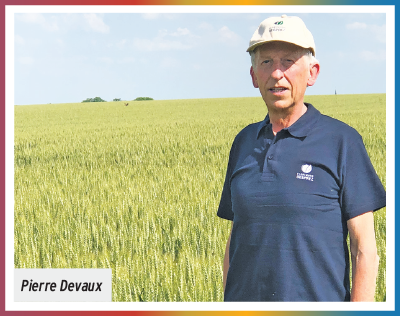
“The major advance subsequently has been the publication of more than 10 different varieties — the wheat PanGenome,” he said. “While the original genome was a huge advance, it was in a ‘lab rat’ wheat variety called Chinese spring, which is very different from modern wheat varieties. The more recent genome ‘assemblies’ provide us with much more relevant information for us to use in our breeding programs. There have also been major advances in how we, and everyone, can access the data, through publicly available web-based tools. These have helped people without specialist computer programming capabilities to utilize the information.”
Breeders increasingly are embracing the tools made possible by the sequencing of the wheat genome, Dr. Devaux said.
“In the early days, some breeders were doubtful about the use of new technologies, e.g. molecular markers, especially when their breeding programs were running very well,” he said. “But now all the wheat breeding community is convinced about the benefit of such technologies and has been using them routinely and at high levels.”
Dr. Appels was more blunt about reticence among veteran breeders and tipped his cap to Stephen Baenziger, professor emeritus at the University of Nebraska Lincoln, as an exception among this group.
“Adoption of the molecular tools and high throughput phenotyping in breeding has required commitment from visionary individuals such as Stephen Baenziger as well as the younger breeders coming through the education system,” Dr. Appels said. “In general the adoption by the older breeders has not been good because they (correctly) insisted on ‘show me’ the results. This ‘show me’ test is now being achieved particularly with the application of SNP chips for the rapid genotyping of individuals in a breeding program.”
Single nucleotide polymorphisms (SNPs) are used to study small variations between whole genomes to identify traits, including disease susceptibility/resistance.
Mr. Burt said many breeders found data from wheat genome sequencing “quite removed” from their work in the field, adding that the wheat breeding community is using the new technology to some extent “even if they aren’t entirely aware of how they are using it.”
Tackling the threats posed by climate change is among the most important potential benefits that could emanate from the sequencing of the wheat genome, Dr. Devaux said.
“Agriculture is facing many challenges, including global warming, extremely changing weather conditions e.g., flooding, extreme drought, heat, increasing population over the world, ban of pesticides, organic agriculture and more,” he said. “This means that breeding programs have to adapt to these new situations, and as far as there are genes controlling the traits, the breeders can have a response to that. With better knowledge of the wheat genome and more recently of the wheat genomes (at least 15 have been sequenced so far), more areas of the genome that contribute to increase yield, quality… will be identified and combined to improve these traits. In addition, we have better information on what parents we have to cross to combine many genes of interest.”
Dr. Devaux said biotechnology may play a role in helping wheat adapt to changing needs, globally if not in the United States.
“We have created a GM wheat that is more resistant to drought and salinity for South America,” he said. “For this part of the world, this new trait enabled wheat to be adopted in areas where it is more difficult to grow.”
Because of the long timeline entailed in developing new wheat varieties, Mr. Burt cautioned that patience will be required.
“Most advances in wheat varieties that we have recently seen or will see in the next 18 months started from the research and breeding process long before the availability of the wheat genome,” he said. “Also, the wheat genome is just one component that helps the research and development that underpins wheat breeding.”
As an example, Mr. Burt cited the introduction by RAGT in the United Kingdom of a variety dubbed RGT Wolverine. The variety resists barley yellow dwarf virus, which is important because certain chemical solutions for the virus have been banned.
“The process of introducing this trait and the extensive backcrossing process started about 20 years before the release of the wheat genome,” he said.
“This is an important development as bans on neonicotinoid seed treatments have caused concern over the resurgence of viral diseases such as barley yellow dwarf virus that are spread through an insect vector,” he said. “The use of the wheat genome in our genetic marker design process helped us at RAGT to develop markers to a resistance to this virus so that we could introduce it efficiently into competitive wheat genetics. Although, to go back to my earlier comment, the process of introducing this trait and the extensive backcrossing process started about 20 years before the release of the wheat genome.”
Dr. Appels said yields, by necessity, long have been a priority for wheat breeders and growers. SNPs have helped efforts around yields to make considerable progress toward developing varieties best able to “deal with the constant challenge of biotic and abiotic stresses.”
In the past, breeders often spent a decade or longer working to achieve a major breakthrough on a single trait, Dr. Appels said. While many years will still be required to develop new varieties, the sequencing of the wheat genome and SNPs will allow breeders to focus on enhancing multiple traits simultaneously, including traits of interest to milling and baking, he said.
As an example, he discussed ways to boost milling yields.
“In the standard milling of grain, a larger grain is optimal and contributes to milling yield,” he said. “Variation for this trait has been mapped to the genome to define regions that can now be tracked using the SNP chip technology.
“This technology generates haplotype ‘fingerprints’ of significant regions for milling yields that can be documented at the same time as regions conferring environmental tolerance and disease resistance.”
He explained that in the past, multiple tests would be conducted on each sample for individual traits. He said the fingerprint technology replaces much more time consuming biochemical procedures that had been used to identify associations for favorable quality attributes.
“In flour, high molecular weight and low molecular weight glutenins and gliadins are the major proteins,” he said. “These three proteins make up what people commonly call gluten. For a whole generation, those proteins have been measured by chemical means. Now they can be measured by the fingerprint testing procedure. These are critical components of wheat flour quality.”
Dr. Appels said feedback from the milling and baking industries will be crucial for breeders to understand which varieties have the qualities that are most desirable. He believes the DNA fingerprinting technology will facilitate enhanced integration of the feedback from millers and bakers into the work of breeders.
He cautioned that many quality characteristics, including water absorption properties of flour, are not as well defined as the glutenin flour proteins. He said wheat genome sequencing will “provide a more rigorous methodology for ensuring that large batches of grain meet the stated specifications for milling and baking.”
What is imperative for the next several years, Dr. Appels said, is building out a database of fingerprints that offer quality keys to a comprehensive range of important wheat quality traits, such as water absorption and milling yields.

